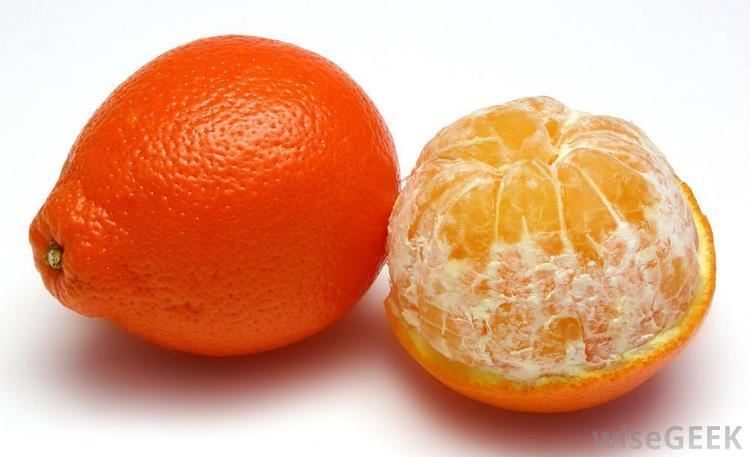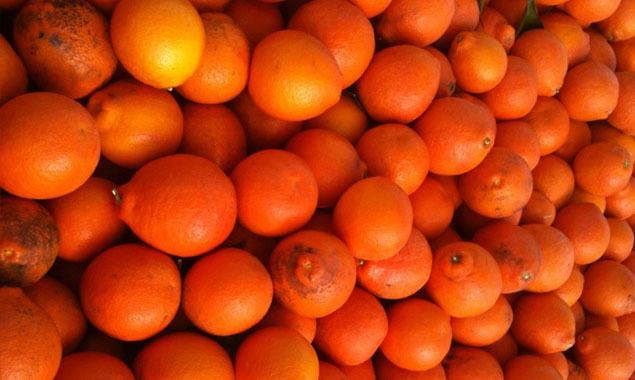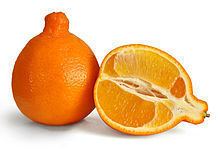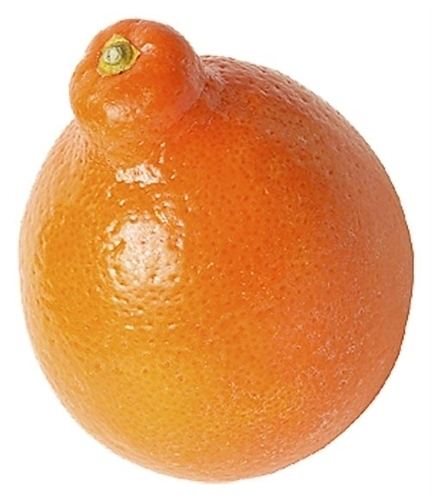Kingdom Plantae Family Rutaceae Species C. × tangelo Higher classification Citrus | Order Sapindales Genus Citrus Scientific name Citrus × tangelo Rank Hybrid | |
 | ||
Similar Pomelo, Tangerine, Clementine, Ugli fruit, Oroblanco | ||
Harvesting huge fruit from our backyard tangelo tree update
The tangelo (/ˈtændʒəloʊ/ TAN-jə-loh or /tænˈdʒɛloʊ/ tan-JEL-loh; C. reticulata × C. maxima or x C. paradisi), Citrus × tangelo, is a citrus fruit hybrid of tangerine and pomelo or grapefruit.
Contents
- Harvesting huge fruit from our backyard tangelo tree update
- Citrus hybrids explained pomelo tangelo and ugli fruit review weird fruit explorer ep 24
- Varieties of tangelos
- Minneola
- Drug interactions
- References

Sometimes referred to as honeybells, tangelos are the size of an adult fist, have a tangerine taste, and are juicy at the expense of flesh. They generally have loose skin and are easier to peel than oranges, readily distinguished from them by a characteristic "nipple" at the stem. Tangelos can be used as a substitute for mandarin oranges or sweet oranges.

Citrus hybrids explained pomelo tangelo and ugli fruit review weird fruit explorer ep 24
Varieties of tangelos
The early maturing Orlando tangelo is noted for its juiciness, mild and sweet flavour, large size, and flat-round shape with a characteristic knob. California/Arizona tangelos have a slightly pebbled texture, good interior and exterior colour, very few seeds, and a tight-fitting rind. Orlando tangelos are available from mid-November to the beginning of February. It originated as a cross between a Duncan grapefruit and a Dancy tangerine. W. T. Swingle of the United States Department of Agriculture (USDA) is credited with creating the hybrid in 1911. When the Orlando tangelo was first cultivated, it was known by the name Lake tangelo. The trees of this variety grow to a large size and are easily recognised by their cup-shape leaves. Orlando tangelos are recognised as one of the more cold-tolerant varieties. Northern Florida grows significantly fewer tangelos, but they are much sweeter due to climate.
Minneola

The Minneola tangelo (sometimes misspelled "Mineola") is a cross between a Duncan grapefruit and a Dancy tangerine, and was released in 1931 by the USDA Horticultural Research Station in Orlando. It is named after Minneola, Florida. Most Minneola tangelos are characterised by a stem-end neck, which tends to make the fruit appear bell-shaped. Because of this, it is also called the Honeybell in the gift fruit trade, where it is one of the most popular varieties. A true Honeybell Tangelo is a hybrid-cross between Thompson tangerine and a pomelo, hence the name Tangelo released by the USDA. Both Minneolas and Honeybells are usually fairly large, typically 3–3½ inches in diameter; the Honeybells tend to be larger and sweeter. The peel colour, when mature, is a bright-reddish-orange colour. The rind of the Minneola is relatively thin, while the rind of the Honeybell is slightly thicker. Both the Minneola and Honeybell Tangelo peel rather easily. Both are very juicy. Both the Minneola and the Honeybell are not strongly self-fruitful, and yields will be greater when interplanted with suitable pollenisers such as Temple tangor, Sunburst tangerine, or possibly Fallglo tangerine. It tends to bear a good crop every other year. In the Northern Hemisphere the fruit matures in the December–February period, with January being the peak.
Drug interactions

One study thus far has shown that, unlike grapefruit, interactions with statins are not likely with tangelos. Although the tangelo is derived from a grapefruit crossed with a tangerine, the furocoumarins in grapefruit are apparently not expressed in tangelos.



